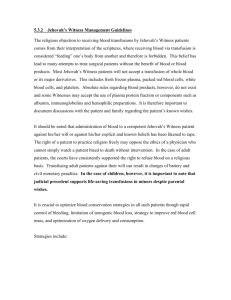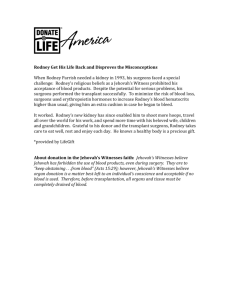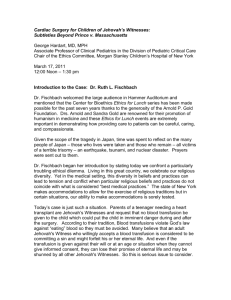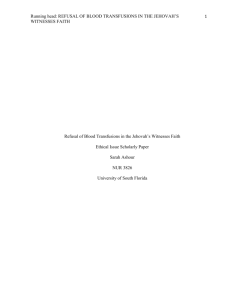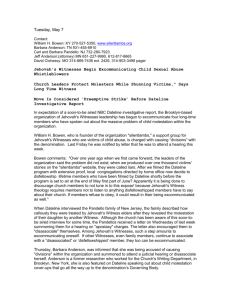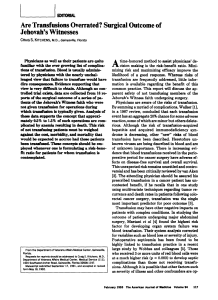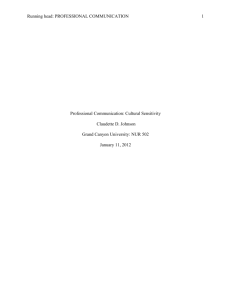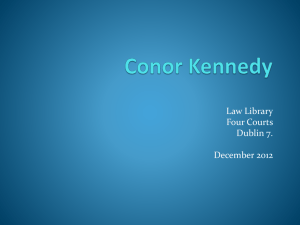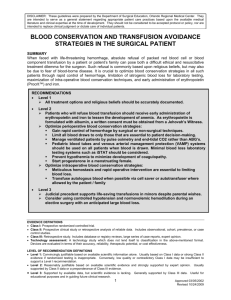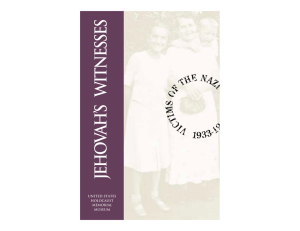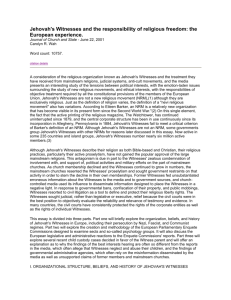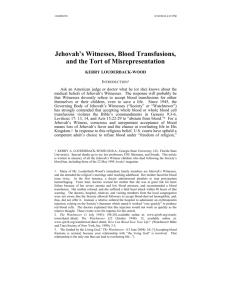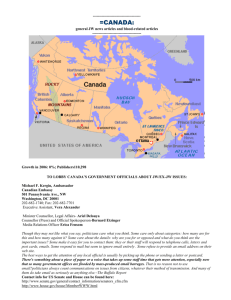file - BioMed Central
advertisement
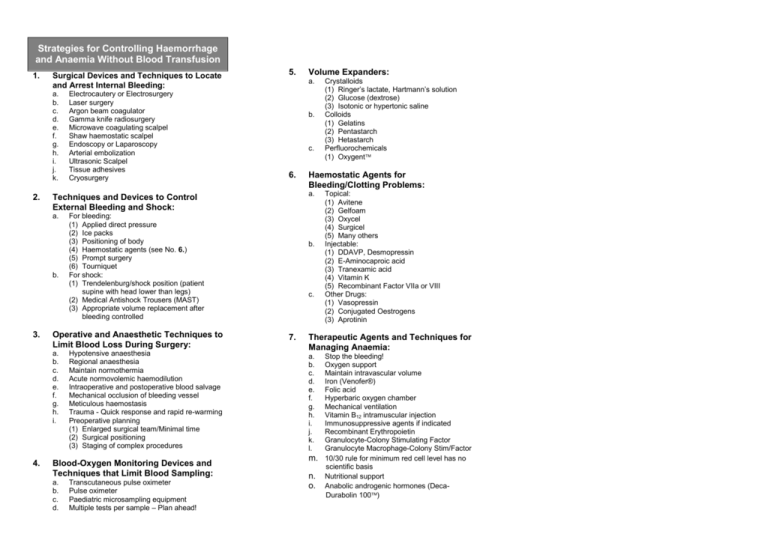
Strategies for Controlling Haemorrhage and Anaemia Without Blood Transfusion 1. Surgical Devices and Techniques to Locate and Arrest Internal Bleeding: a. b. c. d. e. f. g. h. i. j. k. 2. b. a. b. c. d. e. f. g. h. i. 4. b. c. 6. Hypotensive anaesthesia Regional anaesthesia Maintain normothermia Acute normovolemic haemodilution Intraoperative and postoperative blood salvage Mechanical occlusion of bleeding vessel Meticulous haemostasis Trauma - Quick response and rapid re-warming Preoperative planning (1) Enlarged surgical team/Minimal time (2) Surgical positioning (3) Staging of complex procedures Blood-Oxygen Monitoring Devices and Techniques that Limit Blood Sampling: a. b. c. d. Transcutaneous pulse oximeter Pulse oximeter Paediatric microsampling equipment Multiple tests per sample – Plan ahead! b. c. 7. Crystalloids (1) Ringer’s lactate, Hartmann’s solution (2) Glucose (dextrose) (3) Isotonic or hypertonic saline Colloids (1) Gelatins (2) Pentastarch (3) Hetastarch Perfluorochemicals (1) Oxygent Haemostatic Agents for Bleeding/Clotting Problems: a. For bleeding: (1) Applied direct pressure (2) Ice packs (3) Positioning of body (4) Haemostatic agents (see No. 6.) (5) Prompt surgery (6) Tourniquet For shock: (1) Trendelenburg/shock position (patient supine with head lower than legs) (2) Medical Antishock Trousers (MAST) (3) Appropriate volume replacement after bleeding controlled Operative and Anaesthetic Techniques to Limit Blood Loss During Surgery: Volume Expanders: a. Techniques and Devices to Control External Bleeding and Shock: a. 3. Electrocautery or Electrosurgery Laser surgery Argon beam coagulator Gamma knife radiosurgery Microwave coagulating scalpel Shaw haemostatic scalpel Endoscopy or Laparoscopy Arterial embolization Ultrasonic Scalpel Tissue adhesives Cryosurgery 5. Topical: (1) Avitene (2) Gelfoam (3) Oxycel (4) Surgicel (5) Many others Injectable: (1) DDAVP, Desmopressin (2) E-Aminocaproic acid (3) Tranexamic acid (4) Vitamin K (5) Recombinant Factor VIIa or VIII Other Drugs: (1) Vasopressin (2) Conjugated Oestrogens (3) Aprotinin Therapeutic Agents and Techniques for Managing Anaemia: a. b. c. d. e. f. g. h. i. j. k. l. Stop the bleeding! Oxygen support Maintain intravascular volume Iron (Venofer®) Folic acid Hyperbaric oxygen chamber Mechanical ventilation Vitamin B12 intramuscular injection Immunosuppressive agents if indicated Recombinant Erythropoietin Granulocyte-Colony Stimulating Factor Granulocyte Macrophage-Colony Stim/Factor m. 10/30 rule for minimum red cell level has no scientific basis n. Nutritional support o. Anabolic androgenic hormones (DecaDurabolin 100) Jehovah’s Witnesses’ Position on Medical Treatment Will accept all other kinds of medical treatment except blood Are not exercising a right to die Are keen to co-operate with medical professionals Do not try to stop others having blood What Jehovah's Witnesses Won’t Accept 1. 2. 3. 4. 5. 6. Transfusions of whole blood Red cells Plasma Platelets White cells Predonated autologous blood What Jehovah's Witnesses Will Accept 1. 2. 3. 4. 5. 6. Ringer's Lactate Normal Saline Hypertonic Saline Pentastarch Hetastarch Gelatins (Gelofusine/Haemaccel) The Role of the Hospital Liaison Committee A network of over 1,400 Hospital Liaison Committees has been established worldwide. The prime role of these committees is to assist in avoiding confrontation between doctor and patient and to assist understanding on both sides. The Stoke on Trent Hospital Liaison Committee is pleased to offer a free lecture service to hospitals, medical schools, blood transfusion centres and postgraduate departments. Lectures can be tailored to suit most requirements. Also lectures can include the Video:- The Hospital Liaison Committee can: Provide medical articles and information about the latest developments in bloodless surgical and medical management. Provide a contact list of consultant surgeons and physicians who are willing to work with Jehovah's Witnesses without the use of blood or major blood products. Put surgeons and physicians in contact with one another in order to share the benefits of experience and good practice. “The local ‘Hospital Liaison Committee for Jehovah's Witnesses’ can also act as a local resource for information regarding the beliefs and practices of Jehovah's Witnesses. They have access to a great deal of reference material and information.” — Management of Anaesthesia for Jehovah's Witnesses (The Association of Anaesthetists of Great Britain and Ireland, 1999) ADDITIONAL SOURCES OF INFORMATION The following publications are recommended as essential reading for physicians and surgeons involved in treating Jehovah's Witnesses: — Matters of Conscience 1. Fractions derived from any primary component of blood. e.g. anti-D 2. Medical procedures involving the use of autologous blood that do not involve storage. e.g. Intra-operative cell salvage 3. Organ transplant LECTURE SERVICE Code of Practice for the Surgical Management of Jehovah's Witnesses — The Royal College of Surgeons of England (1996) Management of Anaesthesia for Jehovah's Witnesses — The Association of Anaesthetists of Great Britain and Ireland (1999) TRANSFUSION – ALTERNATIVE STRATEGIES Simple Safe Effective Alternatives to blood transfusion in surgery are possible and have proved safe and effective. Blood conservation and avoidance of allogeneic transfusion are fast becoming desirable end points in clinical practice. This video reviews the methods available to achieve this outcome and shows how they are applied in standard surgical practice. With emphasis on simple, cost-effective steps, it shows how to implement a comprehensive strategy that begins with preoperative management and integrates techniques in the domains of both the surgeon and the anaesthesiologist. Internationally renowned expert practitioners describe their experiences and explain how each method is used as part of an overall strategy based on three main principles. Health-care teams will appreciate this practical overview of multi-modal transfusion alternatives and explanation of how to combine them cost effectively and easily in the management of individual patients. To arrange for a lecture and /or see video Please contact: Peter Warren on 01782 313014


